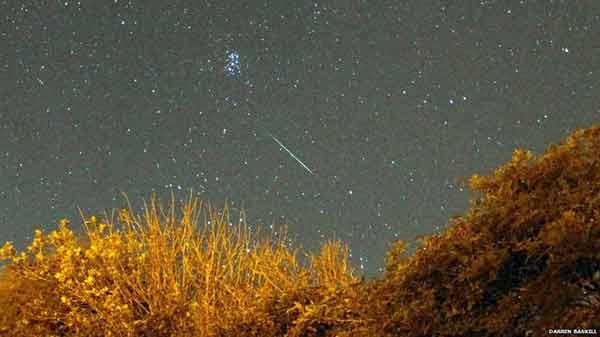
Belfast, Ireland (BBN)-Skywatchers are in for a dazzling display as the annual Perseid meteor shower reaches its peak on Wednesday.
For the first time since 2007, the shower will coincide with a new moon - making viewing conditions particularly favourable, weather permitting, reports BBC.
At the peak, expected after 2300 (local time), as many as 100 meteors may be seen every hour.
The Perseids are pieces of Comet Swift-Tuttle; each August, the Earth passes through a cloud of the comet's debris.
Swift-Tuttle shed this material long ago, and it is now distributed as a tenuous "river of rubble" along the comet's orbit around the Sun.
These particles of ice and dust (which range from the size of a grain of sand to around as big as a pea) hit the Earth's atmosphere at about 60km/s (37 miles/s).
As they do so, they heat the air around them, causing the characteristic streak of light seen from the ground.
From the ground, this shower of meteors appears to originate from a single point, called a "radiant", in the constellation of Perseus - hence the name.
The shower is active each year from around 17 July to 24 August, although for most of that period only a few meteors an hour are visible.
Prime viewing hours are from about 23:00 (local time) on 12 August until the morning of 13 August.
Prof Mark Bailey, the director of Armagh Observatory in Northern Ireland, said the Perseids were "one of the best and most reliable meteor showers of the year".
Alan MacRobert, senior editor at Sky & Telescope magazine, added: "The nearly moonless sky this year means the viewing will be excellent."
This is when the shower's "radiant," its perspective point of origin, is high up in the sky.
The higher the radiant, the more meteors appear all over the sky.
For most people, meteor showers will be best viewed with the naked eye.
Meteor observers advise finding a dark location away from artificial light and an unobstructed view of the sky.
Reclining chairs or blankets are best for looking up at the sky in comfort.
Although the number of visible meteors is hard to predict accurately, at least one every few minutes is expected.
BBN/SK/AD